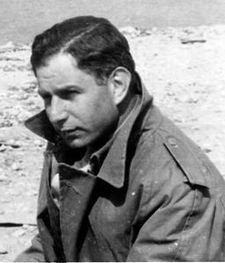Eighty years ago this week the science of bombing steps forward

The allies initiated a massive air and sea bombardment of Pantelleria, a heavily fortified and rocky islet which was seen as a potential impediment to the planned amphibious attack on Sicily. The preparations had involved detailed estimates of the weight of bombs needed to suppress Pantelleria's defences by Solly Zuckermann. Zuckermann had been involved in studies of the effect of German bombing of Britain but it was his work on Pantelleria that established himself as the pet scientist of AM Tedder, the allied air commander in the Mediterranean. When the garrison capitulated before the landing was made, he acquired a rather spurious kudos, which was deployed in the increasingly bitter debate over the best use of bombers. Unusually for the scientists involved in the argument, Zuckerman soon visited Pantelleria to admire the airmen's handiwork.
General de Gaulle turned the screws on Giraud, his rival as leader of the non-Vichy French. He accepted without reference to Giraud the resignation of the governor-general of Algeria, Marcel Peyrouton, a former Vichyite whoe appointment was never very tenable. In the ruckus unleashed by Giraud's protests, the Committee of National Liberation was recast as a larger body. De Gaulle's nominees for the new seats were all his loyalists, but Giraud's nominees were non-aligned figures. By then Giraud could find little else. Power was steadily slipping away from Giraud.
A patrol of Ju-88 maritime fighters shot down a KLM DC-3 airliner over the Bay of Biscay. Amongst those killed was the British film star of Gone With The Wind Leslie Howard, who was returning from a propaganda visit to Spain and Portugal. His death inspired numerous conspiracy theories but in reality the interception was routine and not targeted.


Comments
Post a Comment